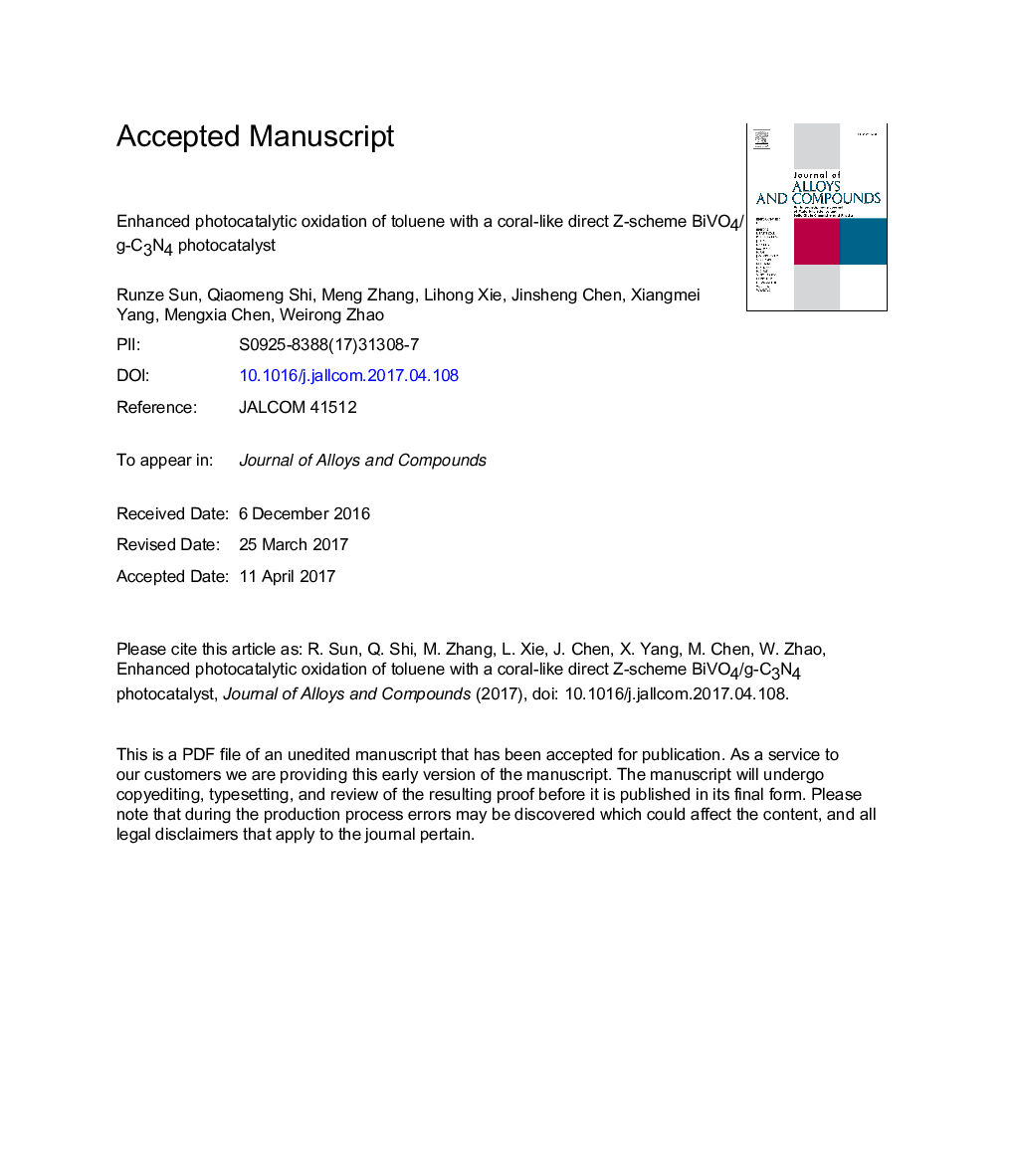| Article ID | Journal | Published Year | Pages | File Type |
|---|---|---|---|---|
| 5459140 | Journal of Alloys and Compounds | 2017 | 34 Pages |
Abstract
A coral-like direct Z-scheme BiVO4/g-C3N4 photocatalyst was synthesized by a calcination method for the photocatalytic oxidation of toluene. The structures and optical properties of the photocatalysts were characterized by X-ray diffraction (XRD), X-ray photoelectron spectroscopy (XPS), Fourier transform infrared spectroscopy (FT-IR), the Brunauer-Emmett-Teller (BET) method and UV-Vis diffuse reflectance spectroscopy (DRS). BiVO4/g-C3N4 composites exhibited coral-like structures, with well-defined boundaries and high specific surface area (33.97 m2 gâ1) compared to a g-C3N4 sample (5.627 m2 gâ1). The introduction of BiVO4 to g-C3N4 greatly enhanced the photocatalytic efficiency. For the optimum BiVO4/g-C3N4 photocatalyst, the degradation rate constant and mineralization rate of toluene were 3.2 and 4.5 times greater, respectively, than those of pure g-C3N4 under visible light (λ > 400 nm). A direct Z-scheme mechanism is proposed for the enhanced photocatalytic activity and was further confirmed by electron spin-resonance spectroscopy (ESR) and terephthalic acid photoluminescence (TA-PL) experiments. This study demonstrated a coral-like BiVO4/g-C3N4 photocatalyst for the efficient photocatalytic oxidation of toluene and provided some understanding for designing direct Z-scheme photocatalysts.
Related Topics
Physical Sciences and Engineering
Materials Science
Metals and Alloys
Authors
Runze Sun, Qiaomeng Shi, Meng Zhang, Lihong Xie, Jinsheng Chen, Xiangmei Yang, Mengxia Chen, Weirong Zhao,
